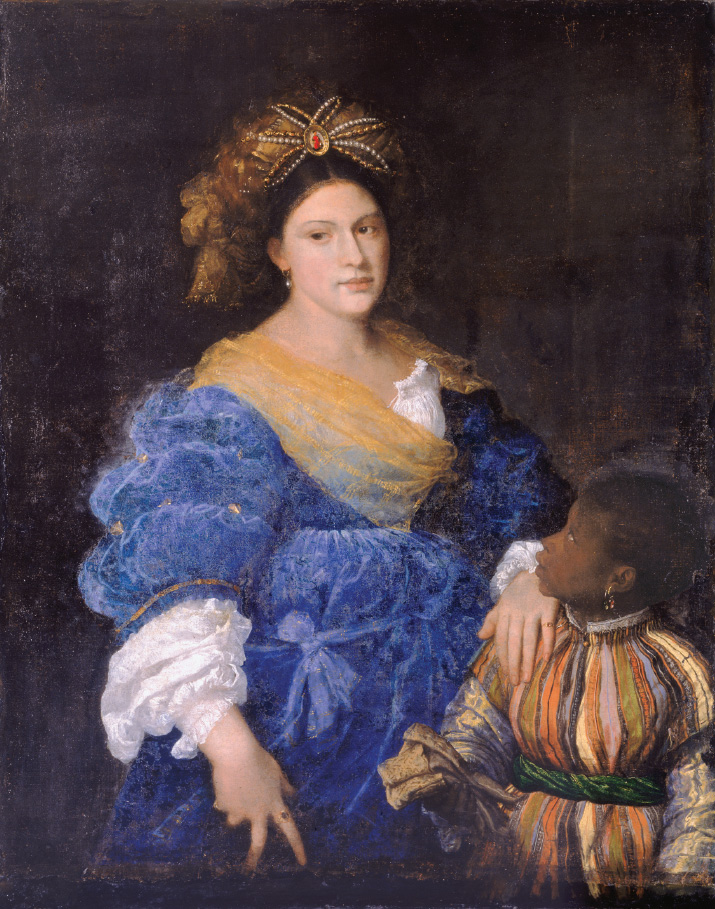A History of Western Society: Printed Page 379
A History of Western Society, Value Edition: Printed Page 389
Race and Slavery
Renaissance people did not use the word race the way we do, but often used race, people, and nation interchangeably for ethnic, national, religious, or other groups — the French race, the Jewish nation, the Irish people, “the race of learned gentlemen,” and so on. They did make distinctions based on skin color that provide some of the background for later conceptualizations of race, but these distinctions were interwoven with other characteristics when people thought about human differences.
Ever since the time of the Roman Republic, a small number of black Africans had lived in western Europe. They had come, along with white slaves, as the spoils of war. Even after the collapse of the Roman Empire, Muslim and Christian merchants continued to import them. Unstable political conditions in many parts of Africa enabled enterprising merchants to seize people and sell them into slavery. Local authorities afforded these Africans no protection. Long tradition, moreover, sanctioned the practice of slavery. The evidence of medieval art attests to the continued presence of Africans in Europe throughout the Middle Ages and to Europeans’ awareness of them.
Beginning in the fifteenth century sizable numbers of black slaves entered Europe. Portuguese sailors brought perhaps a thousand Africans a year to the markets of Seville, Barcelona, Marseilles, and Genoa. In the late fifteenth century this flow increased, with thousands of people taken from the west coast of Africa. By 1530 between four thousand and five thousand were sold to the Portuguese each year. By the mid-sixteenth century blacks, both slave and free, constituted about 10 percent of the population of the Portuguese cities of Lisbon and Évora and roughly 3 percent of the Portuguese population overall. Cities such as Lisbon also had significant numbers of people of mixed African and European descent, as African slaves intermingled with the people they lived among and sometimes intermarried.

Although blacks were concentrated in the Iberian Peninsula, some Africans must have lived in northern Europe as well. In the 1580s, for example, Queen Elizabeth I of England complained that there were too many “blackamoores” competing with needy English people for places as domestic servants. Black servants were much sought after; the medieval interest in curiosities, the exotic, and the marvelous continued in the Renaissance. Italian aristocrats had their portraits painted with their black page boys to indicate their wealth (as in the painting to the right). Blacks were so greatly in demand at the Renaissance courts of northern Italy, in fact, that the Venetians defied papal threats of excommunication to secure them. In 1491 Isabella d’Este, the duchess of Mantua and a major patron of the arts, instructed her agent to secure a black girl between four and eight years old, “shapely and as black as possible.” She hoped the girl would become “the best buffoon in the world,” noting that “we shall make her very happy and shall have great fun with her.”8 The girl would join musicians, acrobats, and dancers at Isabella’s court as a source of entertainment, her status similar to that of the dwarves who could be found at many Renaissance courts.
Africans were not simply amusements at court. In Portugal, Spain, and Italy slaves supplemented the labor force in virtually all occupations — as servants, agricultural laborers, craftsmen, and seamen on ships going to Lisbon and Africa. Agriculture in Europe did not involve large plantations, so large-scale agricultural slavery did not develop there as it would in the late fifteenth century in the New World.
Until the voyages down the African coast in the late fifteenth century, Europeans had little concrete knowledge of Africans and their cultures. They perceived Africa as a remote place, the home of strange people isolated by heresy and Islam from superior European civilization. Africans’ contact, even as slaves, with Christian Europeans could only “improve” the blacks, they thought. The expanding slave trade reinforced negative preconceptions about the inferiority of black Africans.